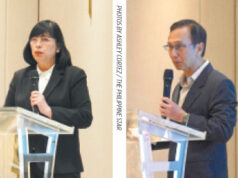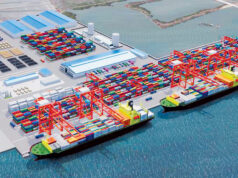Looking back on the Philippines’ hard-fought independence

Independence Day, much more than another national holiday, signifies hope, freedom, and patriotism for Filipinos. The observance serves as a reminder that after decades of struggle amid periods of colonization, the Philippines has been working hard for its independence and sovereignty.
The journey to Philippine independence was described as “long and tenuous” in an article written by Professor Ricardo Trota Jose of the University of the Philippines. During this time, many revolutions and uprisings took place, giving way to the anti-colonial movement. After the many revolutions that occurred, Spain gave up with the Treaty of Paris, concluding the Spanish-American War, which then led to the country’s proclamation of independence on June 12, 1898.
The Philippines was not truly free yet, however. While a part of the said treaty swore that Spain will give up the Philippines, it also said that the country will become a colony of the United States, which soon sparked the battle and resistance against American colonial rule.
The fight for independence thus continued, ushering in the Commonwealth era, a 10-year transitional period to prepare the Philippines for independence from American colonial rule.
But it was not long after the Japanese invaded the country and the Commonwealth era came to an end.
According to a short documentary titled Liberation: Battle of Manila by the then Presidential Communications Development and Strategic Planning Office and the Presidential Museum and Library, the Philippines and the United States have joined hands together, preparing in taking back the city of Manila; but, unfortunately, the Japanese forces had no intention in declaring Manila as an open city.
The Battle of Manila soon followed, from February 3 to March 3, 1945. The month-long battle caused an extreme downfall in the city as many lives were killed and many people suffered.
“Due to extreme inflation, the city has been suffering from starvation, and there’s a sense of abandonment, confusion, and a breakdown of peace and order,” the documentary narrated.
“The Japanese fired many commercial areas in Manila, causing a panic among the civilian population. The streets have been barricaded. Electricity has been cut off. The food supply is quickly depleting,” it added.
The battle became extreme, and the Japanese used all their forces in stopping the American advance. While Filipinos sought refuge, the massacre and killings continued for days. Slowly, the Filipino-American forces saved several areas in the city which were occupied by the enemy; and soon the battle was put to an end. Yet, the battle’s aftermath saw tremendous damage and a tragedy for the country.
“As the war ended, the Philippines counted the cost. Over a million Filipinos had died or were killed, out of a population of 18 million. Manila and most of the major cities were in ruins. Severe inflation had set in as a result of the Japanese occupation, and farms were fallow; farm animals too had died because of the war. Industries, transportation, and communication facilities were destroyed,” as Mr. Jose wrote in his article.
From then on, the control of the civil government was handed back to the Philippines; and a new Commonwealth era has begun, where Manuel Roxas was elected as president in 1946. Afterward, as soon as July came, the country was busy in preparation for the most-awaited independence celebration of the Philippines.
First celebrated on July 4, 1946, the Philippines held a grand celebration that lasted for two days, and many festivities include religious services, exhibitions, contests, parades, concerts, and dinner feasts. However, in 1962, through Republic Act No. 4166, the country’s Independence Day was changed from July 4 to June 12, recalling the first proclamation if Independence.
This year, the 125th celebration of Independence Day is themed “Kalayaan, Kinabukasan, Kasaysayan” (Freedom, Future, History).
According to Administrative Order 8, which created an interagency committee that will plan and implement programs and projects for the commemoration of the 125th anniversary of Philippine independence, the country will commemorate this anniversary from 2023 to 2026 to “give focus on the freedom that our forebears struggled for towards that they dreamed for the country and the history that we seek to remember and honor them with.”
Moreover to commemorate the 125th anniversary of Philippine Independence, the Bangko Sentral ng Pilipinas (BSP) held a launch event of a brand new collection of commemorative coins to mark the country’s independence and nationhood.
According to BSP Governor Felipe M. Medalla, the commemorative coin set was created in an effort to “preserve the cultural heritage and promote pride in our shared history.”
“It is particularly significant when we do these via coinages that we have created for the 125th Independence Day because in a very real sense, the establishment of a formal currency by any country is part of the definition of being a sovereign nation. And that’s why we have to see it not just a very, very nice souvenir but really a commemoration of the creation of the Republic of the Philippines,” President Ferdinand R. Marcos, Jr. said in his speech delivered during the commemorative coin launch.
This commemorative coin set was produced by the central bank using the most recent digital technology; and it comes in different colors: blue, signifying peace; red, standing for valor; and yellow, symbolizing freedom and sovereignty. The set also comes in different types, namely the P5, P20, and P100 coins.
“We have used the most modern technology which also signifies that the Philippines is at that stage in its development that we are now at the forefront. We will use the best technologies, the best techniques, and everything that is good and new for our country, that’s what it means,” Mr. Marcos also explained in his speech.
“It also reminds us of how far we have come and the significance of what we have achieved in 125 years,” he added.
The coins were designed to signify important events in Philippine history. For instance, the P5 coin pays tribute to Filipino soldiers who defended the country during the Philippine-American war; while the P20 coin honors the first day of being a republic country, and the P100 coin symbolizes the declaration of the country’s independence in 1898. — Angela Kiara S. Brillantes



